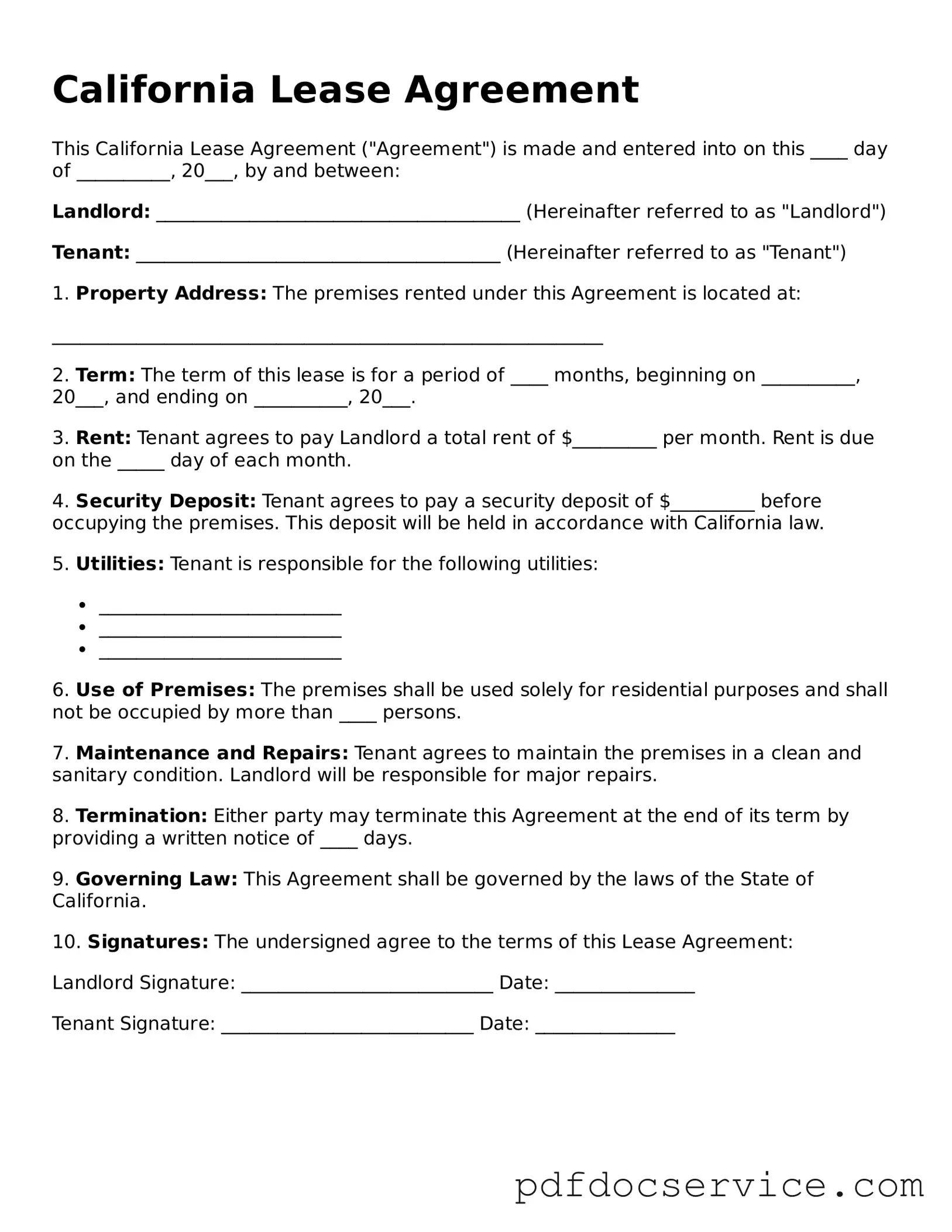What is a California Lease Agreement?
A California Lease Agreement is a legally binding contract between a landlord and a tenant. It outlines the terms and conditions under which a tenant may occupy a rental property. This document is essential for protecting the rights and responsibilities of both parties.
What should be included in a California Lease Agreement?
A comprehensive California Lease Agreement typically includes the following key elements:
-
Names of the landlord and tenant.
-
Property address and description.
-
Lease term (duration of the lease).
-
Rent amount and payment terms.
-
Security deposit details.
-
Maintenance responsibilities.
-
Rules regarding pets, smoking, and guests.
-
Termination and renewal procedures.
How long is a typical lease term in California?
Lease terms in California can vary widely. They are often set for one year, but they can also be month-to-month or for a shorter or longer duration. The specific term should be clearly stated in the lease agreement.
Can a landlord raise the rent during a lease term?
Generally, a landlord cannot raise the rent during the lease term unless the lease agreement explicitly allows for it. For month-to-month leases, landlords must provide proper notice before increasing the rent, typically 30 days for small increases and 60 days for larger increases.
What is a security deposit, and how much can a landlord charge?
A security deposit is a sum of money collected by the landlord to cover potential damages or unpaid rent. In California, the maximum security deposit is usually equal to two months' rent for unfurnished properties and three months' rent for furnished properties.
What are the tenant's rights regarding repairs?
Tenants in California have the right to a habitable living space. This includes access to essential services like heat, water, and electricity. If repairs are needed, tenants should notify the landlord in writing. If the landlord fails to address significant issues, tenants may have the right to withhold rent or make repairs themselves and deduct the cost.
Can a tenant break a lease early?
Breaking a lease early can have legal consequences. However, tenants may do so under certain circumstances, such as domestic violence or uninhabitable living conditions. It is advisable to review the lease agreement and consult legal counsel before making this decision.
What happens if a tenant does not pay rent?
If a tenant fails to pay rent, the landlord can initiate eviction proceedings. California law requires landlords to provide a notice to pay rent or quit, giving tenants a specific timeframe to pay overdue rent before further legal action is taken.
Is a written lease agreement necessary?
While verbal agreements can be enforceable, a written lease agreement is strongly recommended. A written document provides clarity and serves as proof of the terms agreed upon, which can protect both the landlord and tenant in case of disputes.
What should I do if I have a dispute with my landlord?
If a dispute arises, open communication is often the best first step. If the issue cannot be resolved through discussion, consider mediation or seeking legal advice. Document all communications and keep records of any relevant transactions or agreements.
